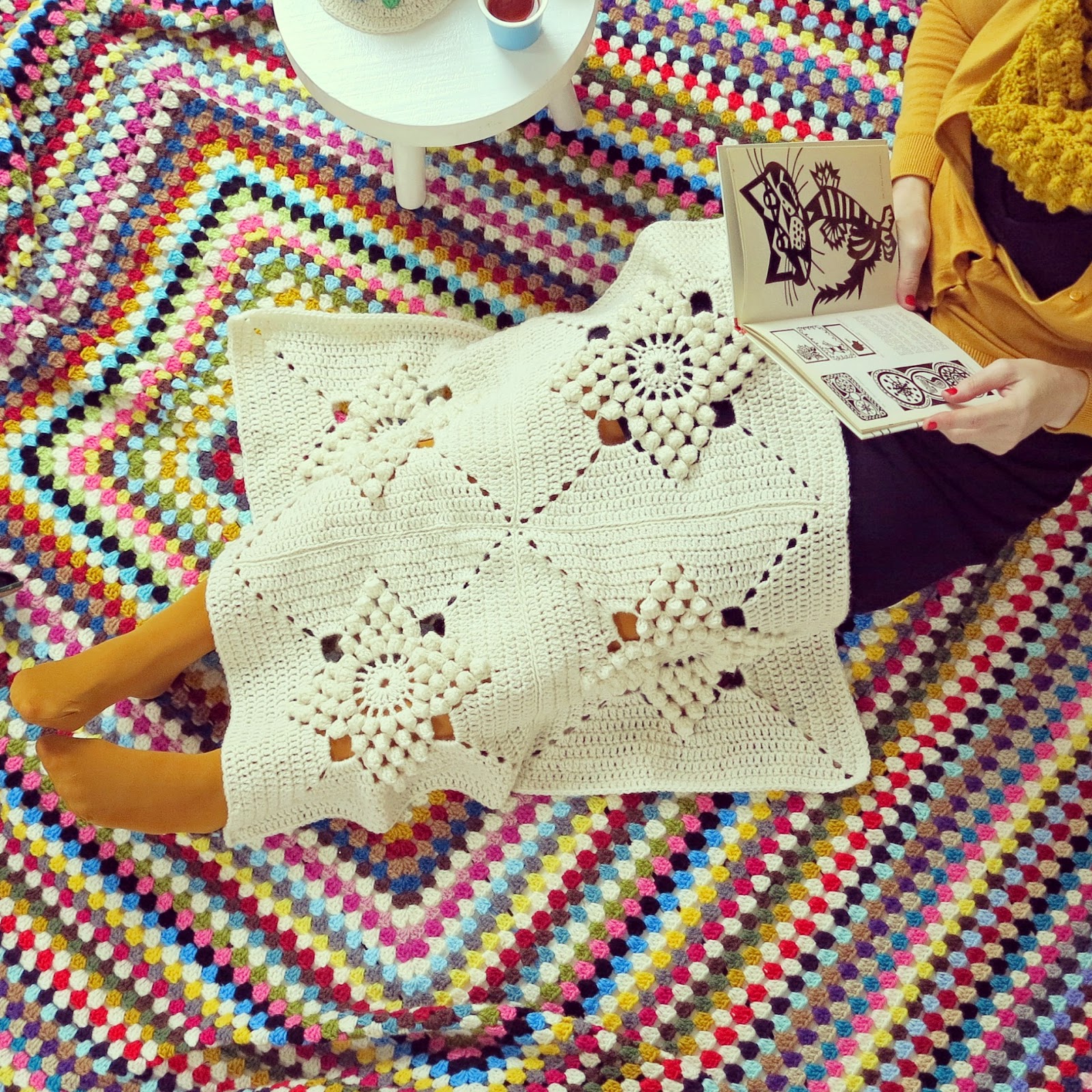I decided I wanted to make a plaid with a certain seventies vibe.
And now, 285 squares further, it's ready. Ready!
I think it does have a vintage feel about it....
So here it is!
Ready for a cosy afternoon with hot almond milk chocolate & a book...

And this is what it looks like as a bed cover...
Here is the pattern of the circle-to-square granny I used. (US terminology)
♦Chain 5 and create a circle with a slipstitch.
♦ Round 1 [1 double crochet, chain 1] 12 x, close with a slipstitch.
♦ Round 2 [2 double crochet, chain 1] 12 x, close with a slipstitch.
♦ Round 3 [3 double crochet, chain 1] 12 x, close with a slipstitch.
♦ Round 4 [3 double crochet, chain 1, 3 double crochet, chain 1, 3 treble crochet, chain 2, 3 treble crochet, chain 1] 4x, close with a slipstitch.
The squares are really 'square' because I made the corners with treble crochet, they make a sharp corner.
I used the join-as-you-go method for joining the squares.
Normally I only use this method if motifs have the same outer colour (same colour in the last round). Otherwise the colours of the different motifs seem to bleed into eachother where you make the join, which makes the result sometimes a bit messy. However, with the muted colours I used for this throw it doesn't bother me.
♦ I'm curious to know: what's your favourite joining method?
I decided to go for a somewhat lacy edging. Which meant spending quite some time flipping through my crochet books and looking on the internet. Finally I decided on a pattern I found online, which I adapted.
However, I was worried the border might ruffle. (I have a strong dislike for anything ruffled, wonder what Freud would have said about that?) So I crocheted the border with a smaller hook than the squares,
except the first row and the last three rows of the border. (Hellooo, are you still with me?) The squares were crocheted with a 4 mm hook, the middle border rows with a 3,5 mm hook.
And it turned out fine. No ruffles!
And now... I can finally say:
♦ Hope you like it!
(And I'd love to hear what your favourite joining method is...)














0 comments:
Post a Comment